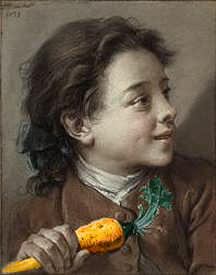3.30.2008
I do miss being able to go home for the NAEA conference. However, EARCOS provided some rather good presentations for art teachers, including some unexpected gems.
One of the sessions that Kim and I both attended was a presentation by Daisy McTighe entitled Strategies for Nurturing Critical and Creative Thinking in the Visual Arts. The concepts for generating creativity that she spoke of were famiar I'm sure to most of her audience, but the specific strategies she suggested were quite useful (and memorable thanks to some easy to remember acronyms. For example:
DOVE: Brainstorming Guidelines
Defer Judgement: No negative criticism. Defer judgement until a large number of alternatives has been produced.
Originality: Freewheeling is desired. Wild, off-beat, unusual ideas are encouraged.
Vastness / Variety: Quantity is stressed: Include the small, obvious alternatives as well as the wild, unusual clever ones.
Elaborate on Others' Ideas: Combine alternatives.
I found SCAMPER : Strategies for Improving Elaboration to be an interesting approach. You can see it in her online handout which is available as a .pdf file here.
One of the highlights for the conference for me was Dr. Michael Hogan's presentation on AP and Pre-AP Strategies for Critical Thinking, Working with Symbols and Images. Designed for educators of any AP class, some of the strategies that he talked about were particularly useful for all art teachers - AP or otherwise. First we discussed the steps in critical thinking:
1) Observation
2) Connecting Observations
3) Inferences (a calculated or educated guess to try against evidence)
4) Tentative Conclusions.
Start with observations, and focus students only on what is indisputable about the image. Through this process, the discussion is 'slowed down' to allow students to examine the image before jumping to conclusions. As an example, we took a look at Pieter Bruegel's Landscape with the Fall of Icarus. 
There's lots to look at in this image, and if you don't spend some time on observation, you might not notice the flailing leg in the water - since no one else in the painting seems to notice it either.














